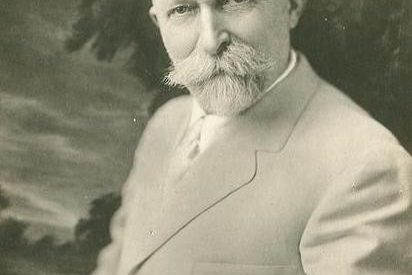Contrary to popular belief in Google searches
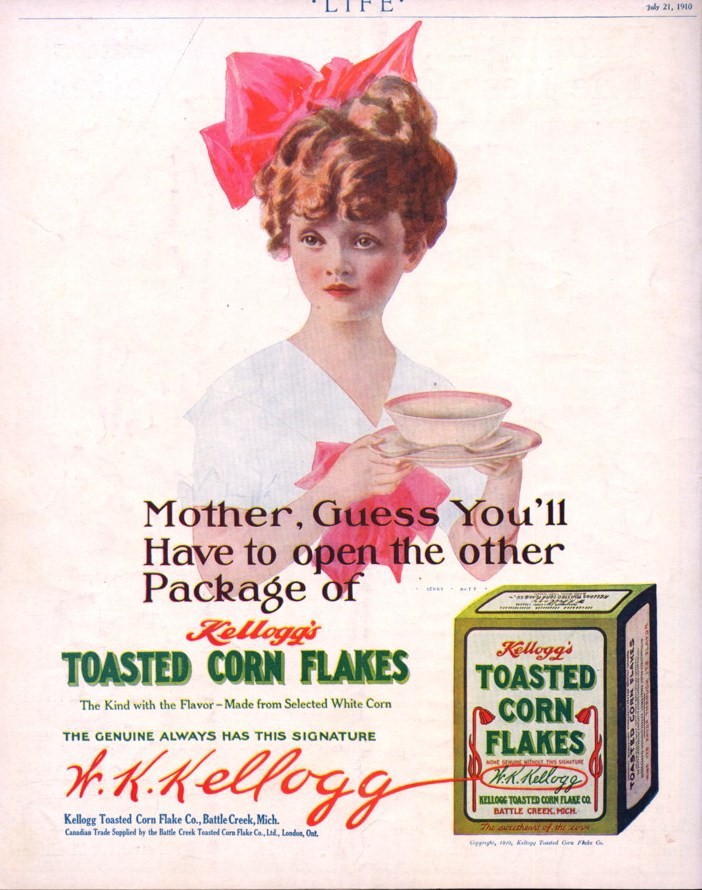 Advertisement for Kellogg?s Toasted Corn Flakes from the July 21, 1910 issue of Life magazine. ? Public Domain
Advertisement for Kellogg?s Toasted Corn Flakes from the July 21, 1910 issue of Life magazine. ? Public Domain
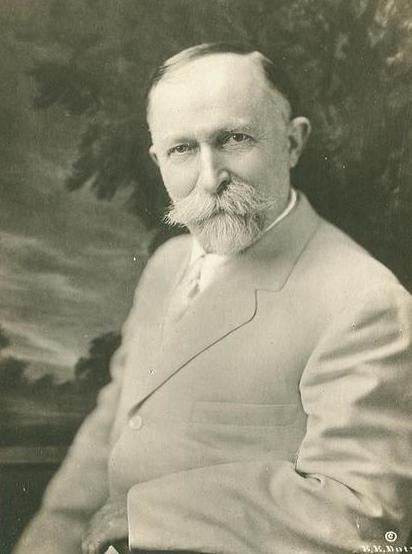 Portrait of Dr. John Harvey Kellogg, 1915, The Willard Library ? Public Domain
Portrait of Dr. John Harvey Kellogg, 1915, The Willard Library ? Public Domain
Most people who eat Kellogg?s Corn Flakes today don?t know that John Harvey Kellogg was actually a very established and prestigious doctor.
The Kellogg brothers were Seventh-day Adventists and raised in a very devout family. John Harvey Kellogg became a doctor after two Ellen and James White, the founders of the Seventh-Day Adventist Church, recognized his potential and helped fund his medical studies at the Bellevue Medical College in New York City. As a Seventh-Day Adventist, Kellogg bought into the Church?s belief that masturbation was a ?self-vice? that was as destructive to the spirit as sexual intercourse.
Kellogg and his family hailed from Battle Creek, Michigan, and there, he became the medical superintendent of the Health Reform Institute that was started by the White family. Kellogg started the term ?Sanitarium?, colloquially known as ?the San?, and started to focus much more on medical and surgical treatment for the patients of the hospital.
He started dedicating himself to improving his medical knowledge and surgical skills, studying medicine abroad with leading European medical figures. He then rose up the ranks and became a lead member of several medical societies, including the American College of Surgeons (ACS) and the American Medical Association (AMA).
Throughout his life, he performed over 22,000 operations, primarily in abdominal surgery. He would work 15 hour days. He had a very low death rate and took no compensation for his surgeries or his work at the Sanitarium. His income came mostly from his books and medical writing. He constantly tried to educate the public on the virtues of health reform.
But Kellogg was no saint. He was an extremely racist person ? a eugenist who held the ?Race Betterment Conference? in 1914 to seek a cure for ?race degeneracy?. The Battle Creek Sanitarium would become an epicenter for the eugenics movement. Kellogg wasn?t just a passive eugenicist but spent the last 30 years of his life developing the science of eugenics. His belief in eugenics, which was tied to Darwinism, led to a break with the Seventh Day-Adventist Church in 1907 since it has a very literal interpretation of creation.
?The intellectual inferiority of the negro male to the European male is universally acknowledged,? he wrote in 1902.
His support of eugenics as a scientific concept was horrible, but it would be confusing given his personal life. Kellogg trained African-American doctors and nurses, and he fostered over 40 children with his wife, Ella Eaton, most of whom were African Americans or children from Latin America. Sojourner Truth was a regular visitor to the Sanitarium and Kellogg would graft some of his own skin to treat her ulcer.
For obvious reasons, Kellogg himself has a very mixed legacy, with his horrid view on eugenics, he also did a lot of good for the medical profession. Kellogg wasn?t just racist against African-Americans, but believed Asians to be the ?yellow peril? and said that ?if we don?t deal with this, we?re going to be ruled by ?orientals? in the future.? He also didn?t like Eastern Europeans much and promoted sterilization of ?defective? people like criminals.
But as for corn flakes, I?d like to think the cereal that so many of us eat for breakfast every day doesn?t have as dark of a history.
The discovery of corn flakes by W.K. Kellogg was a complete accident
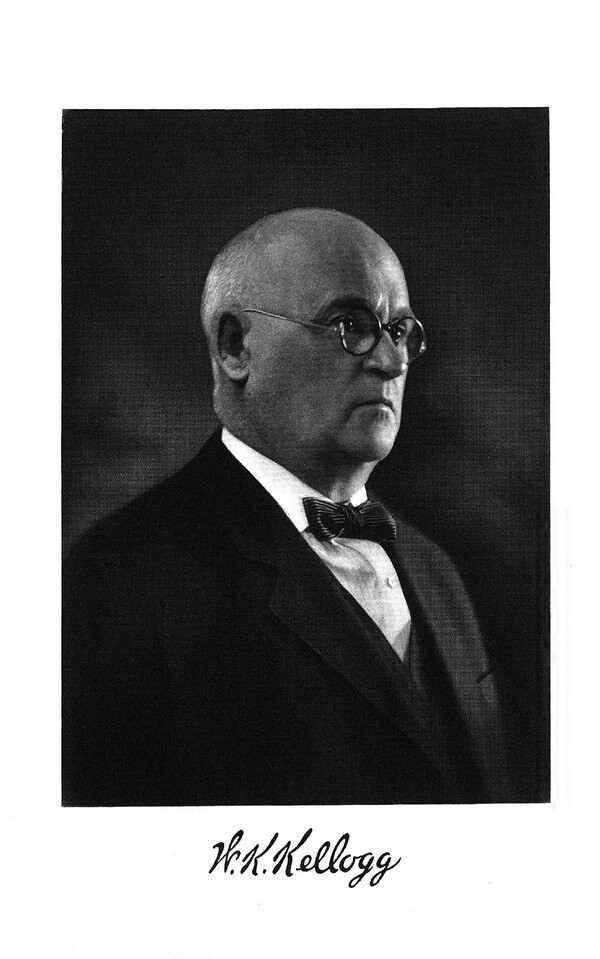 From FotoGuy 49057 on Flickr
From FotoGuy 49057 on Flickr
Will Keith (W.K.) Kellogg was the younger brother of John Harvey Kellogg, and he founded Kellogg?s Corn Flakes ? but through a complete accident. The brothers would learn a lot from each other, and W.K. Kellogg helped his brother significantly with researching and developing healthy diets for his patients.
In 1894, he was boiling wheat, trying to make dough. He accidentally let it stand for several hours. The wheat became softened, and he would later try to roll the ?dough?, to no avail. However, he would notice that the individual wheat berries would roll out to flat, wide flakes. He decided to just bake the flakes, and found that they produced a crisp, tasty cereal product.
The two brothers decided to serve them to the patients of the hospital to reduce dyspepsia (indigestion) and upset stomachs.
The patients loved them and begged the brothers to ship them as packages. They did so on a small scale, and W.K. Kellogg kept refining the cereal. They started the Sanitas Food Company to sell the cereal, and W.K. Kellogg, as a more business-minded person than his brother, wanted to turn corn flakes into an international business.
But the two brothers would have major disagreements
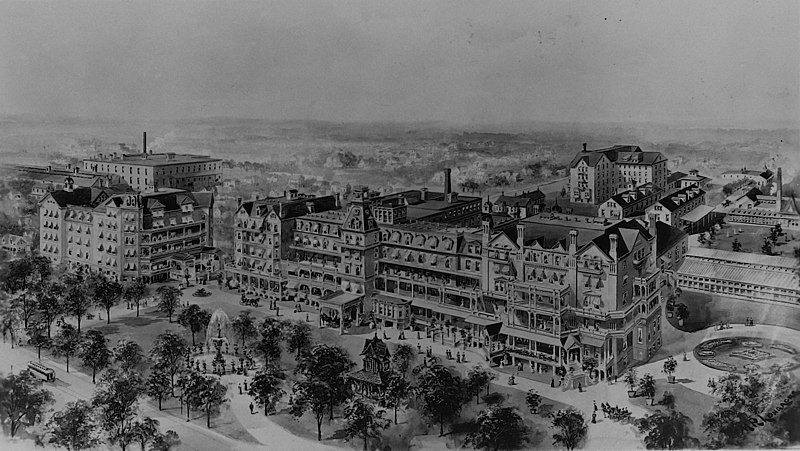 Original Battle Creek Sanitarium in 1902 ? From the Gage Printing Co., Public Domain
Original Battle Creek Sanitarium in 1902 ? From the Gage Printing Co., Public Domain
The two brothers would experiment with corn flakes for a long time. But they would have a huge disagreement and fallout. W.K. Kellogg started to see his older brother as a tyrant, especially when John Harvey Kellogg blocked W.K. Kellogg from putting sugar into the cereal.
He broke from the San and found the Battle Creek Toasted Corn Flake Company, the precursor the Kellogg?s Cereal Company, and started to add more sugar and salt to his cereal to make it tastier. John disagreed strongly on adding sugar to the cereal because of his beliefs that sugar would increase bad behavior. Their religious authority as Seventh-Day Adventists certainly helped as well in the marketing.
Of course, we know now that processed grains and cereals cause a sudden spike in sugar and insulin, which later leads to a ?crash?. High fiber cereals are more likely to make us feel fuller for longer and not have insulin spikes.
W.K. Kellogg, however, would ship 175,000 cases of corn flakes in his first year of the company.
?Within just a few years, Kellogg?s Corn Flakes were a household name and could be found in nearly every kitchen in the United States,? wrote the Lemelson-MIT program.
Kellogg?s Corn Flakes would only be the beginning. The next great hit of W.K. Kellogg would be rice krispies, which would be the next great cereal made from crisped rice that turns crunchy and crispy.
Dispelling the masturbation myth
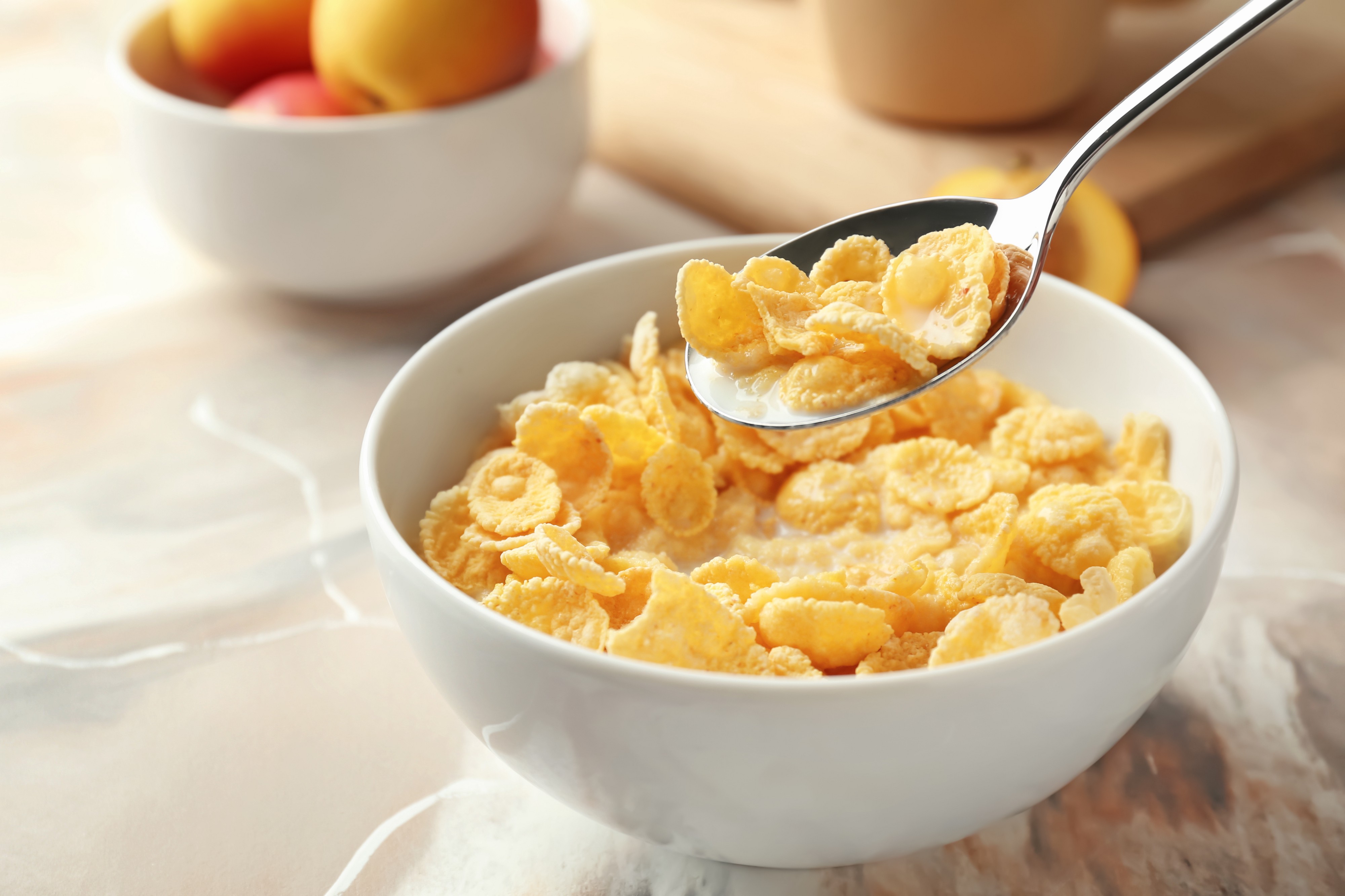 From Pixel-Shot on Adobe Stock
From Pixel-Shot on Adobe Stock
It was W.K. Kellogg, the more business-minded brother, who was responsible for the creation and marketing of corn flakes, not the eugenist brother with wildly wonky views on masturbation.
Sure, John Harvey Kellogg advocated against masturbating and recommended corn flakes as a means to stop masturbation. But the corn flakes were invented for patients at a hospital. It was never actually advertised as an ?anti-masturbatory morning meal,? contrary to popular Google search and meme jokes.
The primary focus in the origins of corn flakes was to feed people in a hospital. The claim that corn flakes were invented to stop people from masturbating, is then is not true. The quote I cited from John Harvey Kellogg that he wanted a ?healthy, ready-to-eat anti-masturbatory meal? isn?t actually from Kellogg. According to Dan MacGuill at Snopes, the phrase originated from a 2012 article by Matt Soniak, which is a very well-researched and well-informed article about the John Harvey Kellogg?s views.
But the words are from Soniak, not Kellogg.
The advertisements made no mention whatsoever of masturbation. Advertisements promoted the corn flakes as ?nutritious and helpful.? The two would promote them as easy to digest, and the two of them simply harped, especially in the patent application, that corn flakes were healthy.
Patients in their hospital suffered from indigestion, and the Kellogg brothers wanted to counter it. According to Howard Merkel in The Smithsonian, a professor on the history of medicine at the University of Michigan,
?It was during medical school when a time-crunched John, who prepared his own meals on top of studying round the clock, first began to think about creating a nutritious, ready-to-eat cereal ? One of the most common medical complaints of the day was dyspepsia, the 19th-century catchall term for a medley of flatulence, constipation, diarrhea, heartburn, and ?upset stomach.??
It was no wonder Dr. Kellogg saw a need for a palatable, grain-based ?health food? that was ?easy on the digestion? and also easy to prepare.?
Even if we don?t see corn flakes as healthy today, it actually was healthy for its time ? according to Merkel, people ate leftovers like filly starchy potatoes fried in congealed oil. People ate meatless breakfasts of mush made from barley, cracked wheat, and oats. After all, it was the late 1800s, and nutrition expertise was not as advanced as it is today.
The purpose of corn flakes was to make a simple food that wouldn?t upset the stomach, especially for the patients at the San. To be clear, John Harvey Kellogg did have very wonky views on masturbation. He wrote a book in 1887 titled Plain Facts for Old and Young: Embracing the Natural History and Hygiene of Organic Life that devoted an entire section to why masturbation was ?self-pollution?, a ?solitary vice,? and ?the most dangerous of all sexual abuses.?
He also had other conservative views on diet. He advocated never overeating, not eating stimulating food, not drinking stimulating drinks with caffeine and alcohol, only eating plain and bland foods, and eating only twice a day.
Corn flakes, being associated with the Kelloggs, is falsely attributed as an anti-masturbatory food. I?m sure Kellogg?s is not complaining about the viral attention and common Google search that gives more attention to its cereal. I?m more likely to buy Kellogg?s Frosted Flakes the next time at the store, because I?ve seen so much on Google about it, and also because it?s my favorite cereal since I was a child.
But I’ll have in mind John Harvey Kellogg?s views on race as a disclaimer. It was the younger brother, entrepreneur W.K. Kellogg, that popularized the brand.
No ? the cereal was not created to stop people from masturbating. It was created to be an easy-to-digest, simple food that fed hospital patients.

